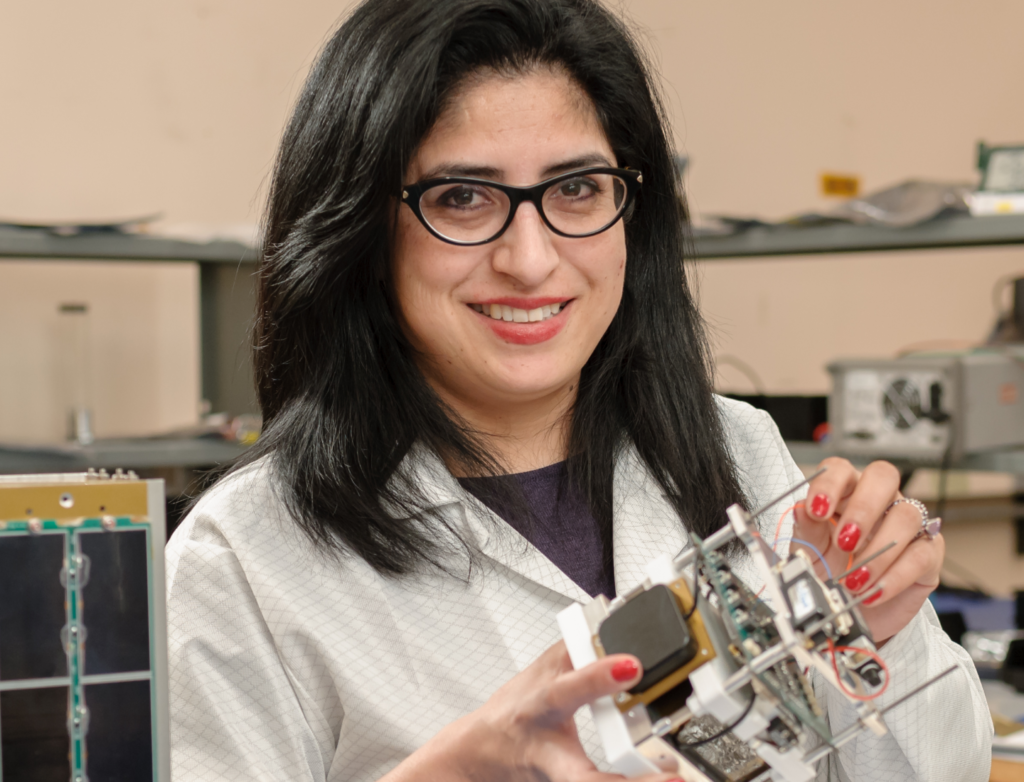Launching a career in aerospace engineering
A conversation with NASA engineer Ali Guarneros Luna

Ali Guarneros Luna grew up in Mexico, where she read books about the space shuttle and dreamed of one day building space structures. But Ali’s life changed dramatically in 1985, when a powerful earthquake hit Mexico City, prompting her family’s move to the United States. Before long, she was a single parent taking care of her own kids.
Ali’s desire to provide a better future for her kids inspired her to go back to school. She graduated from San Jose State University with a B.S. and M.S. in Aerospace Engineering in 2013, and has been working at NASA ever since. We spoke with Ali about her career journey and what students should learn today if they want to pursue an aerospace career in the future.
What made you decide to pursue an aerospace engineering career at NASA?
When I was graduating with a bachelor’s degree, my professor recommended two things to me: get a master’s degree and apply for an internship at NASA. I saw myself working at other companies, but never at NASA — I was older, I had four kids, and I had to work two jobs. But my professor told me I should apply, go through the interview, and learn from it. He convinced me there was nothing to lose. To my surprise, I was hired for the paid internship.
While I was a contractor, I was graduating with my master’s, and NASA had openings for engineers. One of my supervisors let me know and encouraged me to apply. I ended up getting the job, and I became a civil servant. I’ve been at NASA ever since.
I had really good mentors who really believed in me — even when I had my own personal doubts. They gave me opportunities and helped me grow.
In your role at NASA, you’re working with CubeSats. What makes CubeSats interesting, and why should students learn about them?
The cool thing about a CubeSat is that it’s not a huge satellite; it’s a small, symmetrical satellite. It’s easy to build and work with. Anyone can develop technology that can further our research in space.
The form factor was developed by Bob Twiggs. At that time, he was thinking that you could create a jack-in-the-box for your experiments — a kind of enclosure that could conceal the payload inside. And it soon became the form factor that used in the classroom with students, because it’s less complicated and mitigates risk.
At NASA, we’ve built CubeSats that high schools and even middle schools can use to conduct research. Students can actually deploy a CubeSat, and we get information back from it so they have data and feedback.
A lot of times, students come up with their own solutions to a problem that experts and professional engineers have never thought about. They bring a completely different approach to what we’re doing, and it can enhance the development of the technology.
If high school students get excited about CubeSats and want to pursue a career in aerospace, what else should they learn?
Learn how to code. It’s useful to learn a language. When I moved to the U.S., I had to learn English. Nowadays, you should learn a coding language.
We also have to think of methods for building things. We need to train students on how to build things in space, because if we want to go to the moon and Mars, we need to have engineers who know how to build structures and modular systems in space.
The other thing to learn is the human factor. We need to have highly skilled doctors and personnel who understand the human body. We know that if we go to space and stay there for days, months, or even years, the human body is going to change. We need to ensure that it doesn’t become a permanent change and that we stay healthy.
We need to grow all of these skills within our workforce, but the most important skill is to believe in yourself. Be prepared to take risks and overcome challenges. When I was in high school, I wanted to become an engineer but I never saw it in my future because of the obstacles I faced. I never thought I’d be doing what I am doing right now.
Explore careers in space and beyond
As the boundaries of our missions in space continue to expand, so do the opportunities for today’s students to explore a wide range of related careers in space. Submit a mission proposal by 5:59 p.m. ET on October 16 to enter CTE Mission: CubeSat — no in-person collaboration or prior experience with CubeSats is required.
Sign up for challenge news
To receive challenge updates, subscribe to the CTE Mission: CubeSat newsletter.

